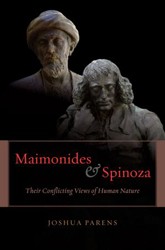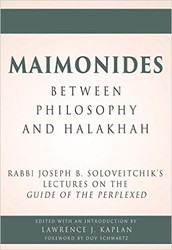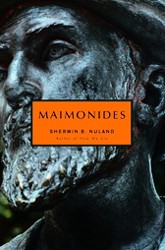The rabbis of Al Andalus, or Muslim Spain, have had a lasting impact on the Talmud, halakhah, and Jewish philosophy, though none as lasting as Moses Maimonides (1138- 1214) — Rabbeinu Moshe ben Maimon the Sefardi, so he signed himself, known too by the acronym RaMBaM. While he wrote prolifically on medicine in his later years and carried on an extensive correspondence throughout his life, Maimonides’s enduring works include extensive far-reaching commentary on the Mishnah, Mishneh Torah—an audacious reconceptualization of the entire Talmud that he worked on “night and day for ten years.” Maimonides introduced the work this way: ”In order that no one should be in need of any other work dealing with the laws of Israel.” Maimonides’s bold, unprecedented purpose was to tame the wildly disorganized halakhah of the Talmud.
While many rabbis enthusiastically embraced Mishneh Torah, others rejected it violently, not only for its audaciousness or even hubris, but for some of Maimonides’s fundamental assumptions that went against prevailing Gaonic authority. That depends on how we read it, Moshe Halbertal argues in Maimonides: Life and Thought. He gives a moderate reading, “which takes the work as a comprehensive, accessible summary of the [Maimonidean] halakhah for those unable to dwell on it in depth, and a radical reading, in which the work does not summarize the earlier halakhic literature but actually replaces it.” In the end, Halbertal concludes, we cannot truly determine the author — “all we can do is formulate the question, ‘what is Mishneh Torah?’”
Halbertal integrated his critical readings with Maimonides’s biography to give us convincing insights into the man, including his escape from Cordoba after the Berber invasions, the little-known years in North Africa where the Maimon family may have converted to Islam to save themselves, the influences of Aristotle as well as Arab thinkers on his fundamental beliefs, his journey to the Holy Land, and finally settlement in Egypt. Maimonides was able to work full-time on the Mishneh commentary and Mishnah Torah because his younger brother David “the most saintly man I knew … went abroad to trade.” But David died at sea in the Indian Ocean — his death threw Maimonides and both families into a financial crisis that forced him to earn a living, which he did as a physician. David’s death also led to a terrible personal crisis: “For almost a year,” Maimonides wrote in a letter, “I lay on my couch stricken with fever, despair, and on the brink of destruction.”
There are numerous scholarly guides to Maimonides’s texts (the Library of Congress lists more than 300 Maimonidean titles in the past decade alone), though few in English are likely to compare with the breadth and depth of Moshe Halbertal’s scholarship, further buoyed by a graceful prose, assured and yet modest in tone, masterfully translated by Joel Linsider.
Moshe Halbertal’s book will serve the aims of different readers — for serious students of Mishneh Torah and halakhah, he sets out foundational arguments that are likely to stimulate further explorations of Maimonides’s contemporary relevance, while the broader readership for the Guide for the Perplexed will be challenged by Halbertal’s provocative analysis of different interpretive readings that this great text embeds within it.
Related content:





